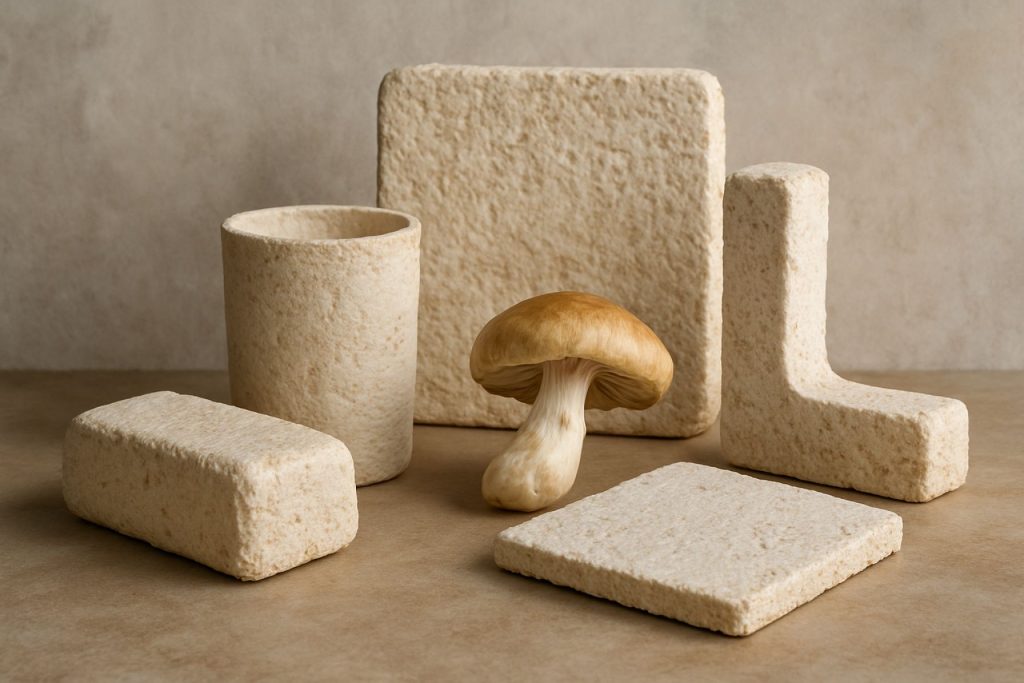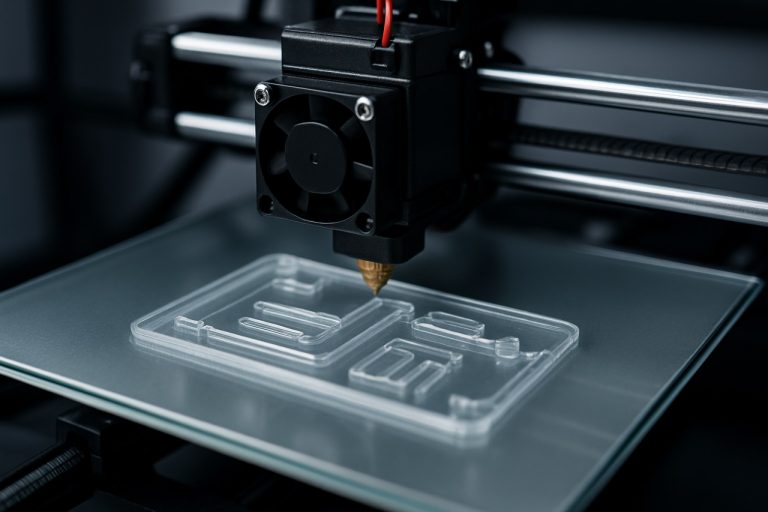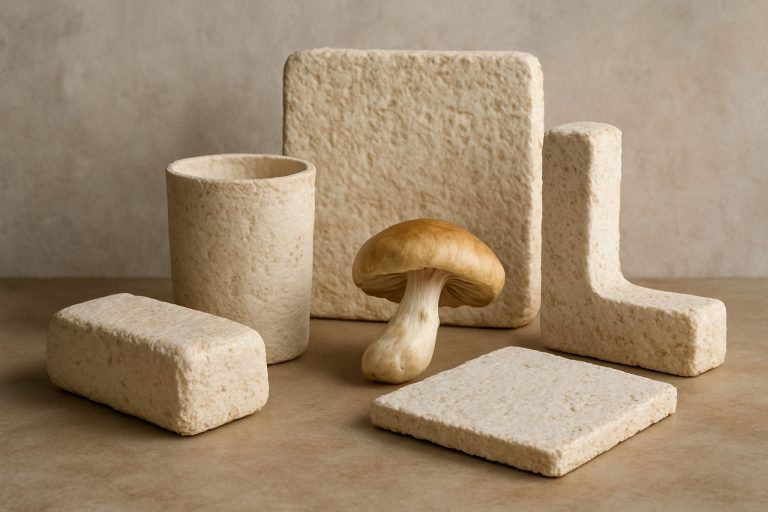
How Mycelium-Based Materials Are Transforming Sustainable Design—From Eco-Friendly Construction to Next-Gen Consumer Products. Discover the Science, Innovations, and Market Momentum Behind This Fungal Phenomenon. (2025)
- Introduction: The Rise of Mycelium in Sustainable Design
- The Science Behind Mycelium-Based Materials
- Key Players and Pioneers: Companies Leading the Mycelium Movement
- Material Properties: Strength, Versatility, and Biodegradability
- Applications in Architecture and Construction
- Mycelium in Consumer Products: Packaging, Textiles, and More
- Environmental Impact and Life Cycle Assessment
- Market Growth and Public Interest: 30%+ Annual Surge in Adoption
- Challenges, Limitations, and Regulatory Considerations
- Future Outlook: Innovations and the Path to Mainstream Adoption
- Sources & References
Introduction: The Rise of Mycelium in Sustainable Design
In recent years, mycelium-based materials have emerged as a transformative force in sustainable design, offering a compelling alternative to conventional plastics, foams, and even leather. Mycelium, the root-like network of fungi, can be cultivated on agricultural waste, forming strong, lightweight, and biodegradable composites. This innovation addresses urgent environmental challenges, such as plastic pollution and resource depletion, by leveraging the natural growth processes of fungi to create materials with minimal ecological footprint.
The momentum behind mycelium-based materials has accelerated into 2025, driven by advances in biotechnology and a growing demand for circular economy solutions. Pioneering companies such as Ecovative Design and Bolt Threads have scaled up production of mycelium composites for packaging, construction, and fashion. Ecovative Design, for example, has developed mycelium-based packaging that decomposes within weeks in natural environments, providing a viable replacement for polystyrene and other persistent plastics. Meanwhile, Bolt Threads has introduced mycelium-derived leather alternatives, collaborating with major brands to integrate these materials into consumer products.
The adoption of mycelium-based materials is also supported by research institutions and international organizations. The United Nations Environment Programme has highlighted the potential of fungi-derived materials in its initiatives to reduce plastic waste and promote sustainable consumption. Academic research, including studies from leading universities, continues to refine the properties and scalability of mycelium composites, making them increasingly competitive with traditional materials in terms of strength, durability, and cost.
In 2025, the outlook for mycelium-based materials is promising. Industry analysts and sustainability advocates anticipate broader adoption across sectors such as architecture, automotive, and consumer goods. The European Union’s Green Deal and similar policy frameworks in North America and Asia are expected to further incentivize the use of bio-based materials, including mycelium, through funding and regulatory support. As the technology matures, collaborations between startups, established manufacturers, and research bodies are likely to accelerate innovation and market penetration.
Overall, the rise of mycelium in sustainable design reflects a broader shift toward regenerative materials and circular systems. With continued investment and cross-sector partnerships, mycelium-based materials are poised to play a significant role in shaping a more sustainable and resilient built environment in the years ahead.
The Science Behind Mycelium-Based Materials
Mycelium-based materials are rapidly emerging as a cornerstone of sustainable design, leveraging the unique biological properties of fungal mycelium—the root-like network of fungi—to create biodegradable, renewable, and high-performance alternatives to conventional materials. The science underpinning these materials centers on the ability of mycelium to bind together organic substrates, such as agricultural waste, through a natural growth process. This results in lightweight, strong, and versatile composites that can be molded into a variety of forms, from packaging and insulation to furniture and architectural components.
The process begins with the inoculation of a substrate (often sawdust, straw, or other lignocellulosic waste) with selected fungal strains. As the mycelium grows, it digests the substrate and forms a dense, interwoven matrix. After a controlled growth period, the material is heat-treated to halt further fungal activity, resulting in a stable, inert product. This method requires minimal energy input compared to traditional manufacturing, and the end products are fully compostable, returning nutrients to the environment at the end of their lifecycle.
Recent advances in mycelium material science have focused on optimizing mechanical properties, scalability, and functionalization. Researchers are engineering mycelium composites with enhanced fire resistance, water repellency, and load-bearing capacity, making them increasingly viable for mainstream construction and product design. For example, ongoing collaborations between academic institutions and industry leaders are refining growth conditions and substrate formulations to tailor material characteristics for specific applications.
In 2025, several organizations are at the forefront of commercializing mycelium-based materials. Ecovative Design, a pioneering biotechnology company, has developed proprietary mycelium technologies for packaging, textiles, and even leather-like materials. Their MycoComposite™ platform is being adopted by global brands seeking sustainable alternatives to plastics and foams. Similarly, MycoWorks specializes in mycelium-based leather, collaborating with luxury fashion houses to introduce eco-friendly products to the market.
The scientific community, including organizations such as the United States Department of Agriculture and leading universities, continues to investigate the environmental impacts and performance metrics of mycelium materials. Life cycle assessments consistently demonstrate significant reductions in carbon footprint and resource consumption compared to petroleum-based counterparts.
Looking ahead, the outlook for mycelium-based materials in sustainable design is highly promising. With ongoing research into genetic engineering, process automation, and material hybridization, the next few years are expected to yield even more robust, customizable, and cost-effective solutions. As regulatory frameworks and industry standards evolve to support bio-based innovations, mycelium materials are poised to play a pivotal role in the transition to a circular, low-impact economy.
Key Players and Pioneers: Companies Leading the Mycelium Movement
The landscape of mycelium-based materials in sustainable design is rapidly evolving, with several pioneering companies and organizations at the forefront of innovation and commercialization. As of 2025, these key players are not only advancing the science of mycelium composites but also scaling up production and forging partnerships across industries such as construction, packaging, fashion, and automotive.
One of the most prominent leaders is Ecovative Design, a U.S.-based biotechnology company founded in 2007. Ecovative has developed proprietary mycelium growth platforms to create alternatives to plastics, foams, and animal-based materials. Their MycoComposite™ technology is being used for packaging solutions, insulation, and even furniture. In recent years, Ecovative has expanded its reach through collaborations with global brands and by licensing its technology to partners worldwide, accelerating the adoption of mycelium materials in mainstream markets.
In Europe, Mogu, headquartered in Italy, is a key innovator specializing in mycelium-based interior design products. Mogu produces acoustic panels, floor tiles, and wall coverings, all derived from fungal mycelium and agricultural waste. The company’s products have been installed in commercial and public spaces across Europe, demonstrating the scalability and aesthetic versatility of mycelium materials. Mogu’s ongoing research focuses on enhancing durability and expanding color and texture options, aiming to meet the rigorous standards of the architecture and design industries.
Another significant player is MycoWorks, a U.S. company renowned for its development of Reishi™, a mycelium-based leather alternative. MycoWorks has attracted attention from luxury fashion houses and automotive manufacturers seeking sustainable, high-performance materials. In 2023, the company opened a large-scale production facility, signaling a shift from pilot projects to industrial-scale manufacturing. MycoWorks’ partnerships with global brands are expected to drive further adoption of mycelium leather in the coming years.
Beyond these leaders, organizations such as Fraunhofer Society in Germany are conducting advanced research into mycelium composites for construction and insulation, while startups like Grown.bio in the Netherlands are developing custom mycelium packaging and product design solutions. These efforts are supported by increasing investment and policy interest in bio-based materials as part of broader sustainability and circular economy initiatives.
Looking ahead, the next few years are expected to see further breakthroughs in material performance, cost reduction, and regulatory acceptance. As these key players continue to innovate and collaborate, mycelium-based materials are poised to become integral to sustainable design across multiple sectors.
Material Properties: Strength, Versatility, and Biodegradability
Mycelium-based materials are gaining significant attention in sustainable design due to their unique combination of strength, versatility, and biodegradability. As the root-like structure of fungi, mycelium can be cultivated on agricultural waste, forming dense networks that bind substrates into lightweight yet robust composites. In 2025, ongoing research and commercial developments are refining these properties to meet the demands of various industries, from construction to packaging and fashion.
In terms of strength, mycelium composites have demonstrated mechanical properties comparable to conventional materials such as expanded polystyrene and medium-density fiberboard. The density and compressive strength of mycelium-based panels can be tailored by adjusting growth conditions, substrate composition, and post-processing methods. For example, Ecovative Design, a leading biotechnology company, has developed mycelium materials with compressive strengths suitable for protective packaging and interior architecture. Their products are engineered to withstand significant loads while remaining lightweight, making them attractive alternatives to petroleum-based foams.
Versatility is another hallmark of mycelium-based materials. The growth process allows for molding into complex shapes without the need for energy-intensive manufacturing. This adaptability has enabled applications ranging from acoustic panels and insulation to furniture and even fashion accessories. Organizations such as Bolt Threads are exploring mycelium’s potential in textiles, producing leather-like materials that are both flexible and durable. The ability to fine-tune texture, density, and appearance during cultivation opens new possibilities for designers seeking sustainable and customizable solutions.
Biodegradability is a defining advantage of mycelium-based materials. Unlike conventional plastics and synthetic composites, mycelium products decompose naturally at the end of their lifecycle, returning nutrients to the environment without leaving toxic residues. This property is being leveraged by companies like MycoWorks, which produces mycelium leather that can be composted after use. The environmental benefits are further amplified by the use of agricultural byproducts as feedstock, reducing waste and carbon emissions associated with traditional material production.
Looking ahead, the next few years are expected to bring further improvements in the performance and scalability of mycelium-based materials. Collaborative efforts between research institutions and industry leaders are focused on enhancing fire resistance, water repellency, and structural integrity to expand their use in mainstream construction and consumer products. As regulatory frameworks and certification standards evolve, mycelium materials are poised to play a pivotal role in advancing circular economy principles and reducing the environmental footprint of material-intensive industries.
Applications in Architecture and Construction
Mycelium-based materials are rapidly gaining traction in architecture and construction as a sustainable alternative to conventional building materials. Mycelium, the root-like structure of fungi, can be cultivated on agricultural waste to form lightweight, strong, and biodegradable composites. In 2025, several pioneering projects and collaborations are demonstrating the viability of mycelium in real-world architectural applications, with a focus on reducing carbon footprints and promoting circular design.
One of the most prominent organizations advancing mycelium-based construction is Ecovative Design, a biotechnology company specializing in mycelium materials. Ecovative has partnered with architects and designers to create insulation panels, acoustic tiles, and even structural elements. Their mycelium composites are being tested for fire resistance, thermal insulation, and load-bearing capacity, with results indicating performance comparable to traditional materials in certain applications.
In Europe, the Delft University of Technology (TU Delft) has been at the forefront of research and prototyping. Their “Myco-architecture” projects have produced pavilions and interior elements using mycelium grown in custom molds, demonstrating the material’s flexibility and potential for bespoke design. TU Delft’s ongoing research in 2025 focuses on scaling up production and improving the durability of mycelium composites for exterior use.
The Fraunhofer Society, one of Europe’s leading applied research organizations, is also investigating mycelium-based materials for construction. Their studies in 2024–2025 are centered on optimizing growth substrates and integrating mycelium with other bio-based fibers to enhance mechanical properties. Early findings suggest that hybrid mycelium composites could meet building code requirements for non-load-bearing walls and insulation.
Several demonstration buildings and installations have been completed or are underway. For example, the “Growing Pavilion” in the Netherlands, constructed with mycelium panels, has been showcased at international design events to highlight the material’s aesthetic and environmental benefits. These projects serve as testbeds for regulatory approval and public acceptance, which remain key challenges for widespread adoption.
Looking ahead, the outlook for mycelium-based materials in architecture and construction is promising. As research institutions and companies refine production methods and address regulatory hurdles, it is expected that mycelium composites will move from niche applications to broader use in interior architecture, temporary structures, and eventually, permanent buildings. The next few years will likely see increased investment, pilot projects, and the development of industry standards, positioning mycelium as a cornerstone of sustainable design.
Mycelium in Consumer Products: Packaging, Textiles, and More
Mycelium-based materials are rapidly gaining traction in the consumer products sector, particularly as sustainable alternatives in packaging, textiles, and a range of other applications. As of 2025, several pioneering companies and research institutions are scaling up production and commercial deployment, driven by increasing demand for eco-friendly solutions and regulatory pressures to reduce plastic waste.
In packaging, mycelium composites are being adopted as biodegradable replacements for polystyrene and other petroleum-based foams. Companies such as Ecovative Design, a leader in mycelium technology, have developed scalable processes to grow packaging materials using agricultural waste and fungal mycelium. These materials are home-compostable, require significantly less energy to produce than conventional plastics, and have been adopted by major brands for protective packaging of electronics, cosmetics, and specialty foods. In 2024, Ecovative announced expanded partnerships with global packaging suppliers, aiming to increase production capacity to meet growing demand in North America and Europe.
The textile industry is also witnessing a surge in mycelium-based innovations. Mycelium leather alternatives, such as those developed by Bolt Threads and MycoWorks, are being integrated into fashion and footwear collections by leading brands. These materials offer a lower environmental footprint compared to animal leather, with reduced water use, greenhouse gas emissions, and chemical processing. In 2025, MycoWorks is set to open a large-scale production facility in the United States, aiming to supply mycelium leather to luxury and mass-market brands alike. Meanwhile, Bolt Threads continues to collaborate with apparel companies to bring mycelium-based textiles to market, emphasizing both sustainability and performance.
Beyond packaging and textiles, mycelium materials are being explored for use in furniture, acoustic panels, and even consumer electronics casings. Research institutions such as Massachusetts Institute of Technology and Wageningen University & Research are actively investigating the mechanical properties, scalability, and life-cycle impacts of mycelium composites, supporting their integration into mainstream product design.
Looking ahead, the outlook for mycelium-based consumer products is promising. Ongoing advances in strain selection, substrate optimization, and automated cultivation are expected to drive down costs and improve material consistency. Regulatory support for biodegradable materials and growing consumer awareness of sustainability are likely to accelerate adoption. By 2027, industry analysts and stakeholders anticipate that mycelium-based materials will be a standard option in multiple consumer product categories, contributing significantly to the transition toward a circular, bio-based economy.
Environmental Impact and Life Cycle Assessment
Mycelium-based materials have emerged as a promising solution in sustainable design, offering significant environmental advantages over conventional materials. As of 2025, the environmental impact and life cycle assessment (LCA) of mycelium composites are being rigorously studied by academic institutions, industry leaders, and international organizations. These assessments focus on the entire life cycle—from raw material sourcing and production to use and end-of-life scenarios.
Mycelium, the root-like structure of fungi, can be cultivated on agricultural waste, requiring minimal energy and water inputs compared to traditional materials like plastics, concrete, or leather. According to recent studies conducted by the Ellen MacArthur Foundation, mycelium-based products demonstrate a lower carbon footprint, reduced resource extraction, and the potential for full biodegradability at end-of-life. The Foundation, a global leader in circular economy research, highlights mycelium’s role in closing material loops and reducing landfill waste.
Life cycle assessments performed by research groups at the Delft University of Technology and the Massachusetts Institute of Technology have quantified the environmental benefits of mycelium composites. These studies report that mycelium-based insulation panels, packaging, and construction materials can reduce greenhouse gas emissions by up to 80% compared to petroleum-based foams and plastics. Additionally, the energy required for mycelium cultivation is significantly lower, as the process occurs at ambient temperatures and does not require high-pressure or chemical-intensive treatments.
In 2025, several companies, such as Ecovative—a pioneer in mycelium technology—are collaborating with global brands to replace single-use plastics and leather with mycelium alternatives. Ecovative’s LCA data, shared in partnership with the United Nations Environment Programme, indicate that mycelium packaging decomposes within weeks in natural environments, leaving no toxic residues. This contrasts sharply with conventional plastics, which persist for centuries and contribute to microplastic pollution.
Looking ahead, the next few years are expected to see further refinement of LCA methodologies for mycelium materials, with increased standardization led by organizations such as the International Organization for Standardization. As regulatory frameworks evolve and demand for sustainable materials grows, mycelium-based products are poised to play a central role in reducing the environmental impact of the built environment, consumer goods, and packaging industries.
Market Growth and Public Interest: 30%+ Annual Surge in Adoption
The market for mycelium-based materials in sustainable design is experiencing a remarkable surge, with adoption rates exceeding 30% annually as of 2025. This rapid growth is driven by increasing environmental awareness, regulatory pressures to reduce carbon footprints, and the urgent need for alternatives to conventional plastics and synthetic materials. Mycelium, the root-like structure of fungi, offers a biodegradable, low-impact solution that is being embraced across industries such as construction, packaging, fashion, and interior design.
Key players in the field, including Ecovative Design and Bolt Threads, have reported significant expansion in both production capacity and commercial partnerships. Ecovative Design, a pioneer in mycelium technology, has scaled up its Mushroom® Packaging and MycoComposite™ materials, supplying major brands seeking sustainable packaging and insulation solutions. Similarly, Bolt Threads has advanced its Mylo™ mycelium leather, collaborating with global fashion houses to introduce eco-friendly alternatives to animal and synthetic leathers.
The construction sector is also witnessing increased integration of mycelium-based products. Organizations such as BioMason are developing mycelium-infused building materials that offer improved insulation, fire resistance, and end-of-life compostability. These innovations align with the growing demand for green building certifications and circular economy principles, further accelerating market adoption.
Public interest in mycelium-based materials is reflected in the proliferation of design competitions, exhibitions, and academic research. Institutions like Massachusetts Institute of Technology and Delft University of Technology are actively exploring mycelium’s potential in architecture and product design, fostering a new generation of designers and engineers skilled in biofabrication.
Looking ahead, the outlook for mycelium-based materials remains highly optimistic. Industry forecasts and pilot projects suggest that by 2027, mycelium composites could capture a significant share of the sustainable materials market, particularly in packaging and interior applications. Ongoing investments in research, automation, and supply chain development are expected to further reduce costs and enhance scalability, making mycelium-based solutions increasingly accessible to mainstream manufacturers and consumers.
As regulatory frameworks tighten around single-use plastics and carbon emissions, and as consumer demand for eco-friendly products intensifies, mycelium-based materials are poised to play a pivotal role in the transition toward a more sustainable and circular design economy.
Challenges, Limitations, and Regulatory Considerations
Mycelium-based materials have garnered significant attention as sustainable alternatives in design and construction, but their broader adoption faces several challenges, limitations, and regulatory hurdles as of 2025 and looking ahead. One of the primary technical challenges is achieving consistent material properties at scale. Mycelium composites are highly sensitive to growth conditions, substrate composition, and environmental factors, leading to variability in mechanical strength, water resistance, and durability. This variability complicates their use in applications requiring strict performance standards, such as load-bearing construction elements or exterior cladding.
Another limitation is the current production capacity. While several companies and research institutions have demonstrated successful pilot projects, scaling up to industrial levels remains a work in progress. For example, Ecovative Design, a leading innovator in mycelium materials, has expanded its facilities and partnerships, but the global supply chain for agricultural waste substrates and controlled growth environments is still developing. This affects both the cost and availability of mycelium-based products, making them less competitive with established materials like plastics and conventional composites.
Regulatory considerations present a further barrier. Building codes and product standards in most regions have not yet been updated to accommodate mycelium-based materials. Certification processes for fire safety, structural integrity, and long-term performance are often based on traditional materials, requiring extensive testing and documentation for novel bio-based products. Organizations such as the ASTM International and International Organization for Standardization (ISO) are beginning to address these gaps, but harmonized standards specific to mycelium materials are still in early development. This regulatory uncertainty can slow market entry and deter investment.
Additionally, there are concerns about biodegradability and end-of-life scenarios. While mycelium materials are often promoted as compostable, their actual decomposition rates and environmental impacts depend on additives, coatings, and local waste management infrastructure. Ensuring that these materials do not introduce contaminants or persist in the environment is an ongoing research focus for groups like Fraunhofer-Gesellschaft, a major European applied research organization.
Looking forward, overcoming these challenges will require coordinated efforts among material scientists, industry stakeholders, and regulatory bodies. Progress in standardization, improved production methods, and clearer regulatory pathways are expected over the next few years, potentially enabling mycelium-based materials to play a more prominent role in sustainable design by the late 2020s.
Future Outlook: Innovations and the Path to Mainstream Adoption
As the urgency for sustainable solutions intensifies in 2025, mycelium-based materials are positioned at the forefront of innovation in design and construction. Mycelium—the root-like structure of fungi—offers a biodegradable, low-carbon alternative to conventional materials such as plastics, foams, and even some building composites. The next few years are expected to witness significant advancements in both the performance and scalability of mycelium-based products, driven by collaborative efforts among research institutions, startups, and established industry players.
One of the most prominent organizations in this field, Ecovative Design, continues to expand its portfolio of mycelium-based materials for packaging, textiles, and construction. In 2025, Ecovative is scaling up its “Mycelium Foundry” platform, enabling partners to co-develop custom mycelium composites with tailored properties for specific applications. This collaborative model is expected to accelerate the integration of mycelium materials into mainstream supply chains, particularly in the packaging and fashion industries.
In the built environment, mycelium’s potential as a structural and insulation material is being actively explored. The European research consortium FUNGAR is advancing the development of “living architecture,” where mycelium-based composites are used for self-healing and adaptive building elements. Their ongoing projects in 2025 focus on optimizing the mechanical strength and fire resistance of mycelium panels, addressing key barriers to regulatory approval and widespread adoption in construction.
Automotive and consumer electronics sectors are also showing increased interest. Companies like Ford Motor Company have announced pilot programs to test mycelium-based foams for interior components, aiming to reduce reliance on petroleum-derived plastics. Meanwhile, global brands in footwear and apparel are collaborating with mycelium innovators to launch biodegradable product lines, signaling a shift toward circular design principles.
Despite these advances, challenges remain. Standardization of material properties, scalability of production, and cost competitiveness with established materials are ongoing concerns. However, the formation of industry consortia and partnerships with organizations such as the Ellen MacArthur Foundation—a leader in promoting the circular economy—are fostering knowledge exchange and setting the stage for harmonized standards.
Looking ahead, the outlook for mycelium-based materials is optimistic. With increasing regulatory support for sustainable materials and growing consumer demand for eco-friendly products, the next few years are likely to see mycelium composites transition from niche applications to mainstream adoption across multiple sectors. Continued investment in research, infrastructure, and cross-sector collaboration will be critical to unlocking the full potential of mycelium in sustainable design.
Sources & References
- Ecovative Design
- Bolt Threads
- Ecovative Design
- MycoWorks
- Mogu
- Fraunhofer Society
- Grown.bio
- MycoWorks
- Delft University of Technology
- Massachusetts Institute of Technology
- Wageningen University & Research
- Ellen MacArthur Foundation
- Massachusetts Institute of Technology
- International Organization for Standardization
- BioMason
- Delft University of Technology
- ASTM International
- International Organization for Standardization (ISO)
- Fraunhofer-Gesellschaft



